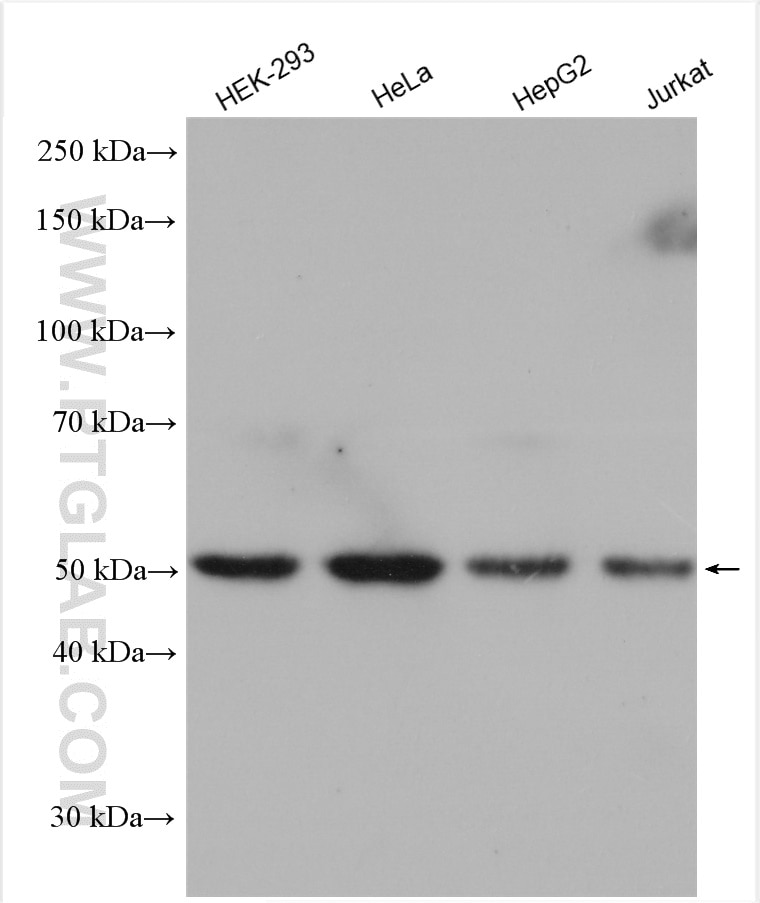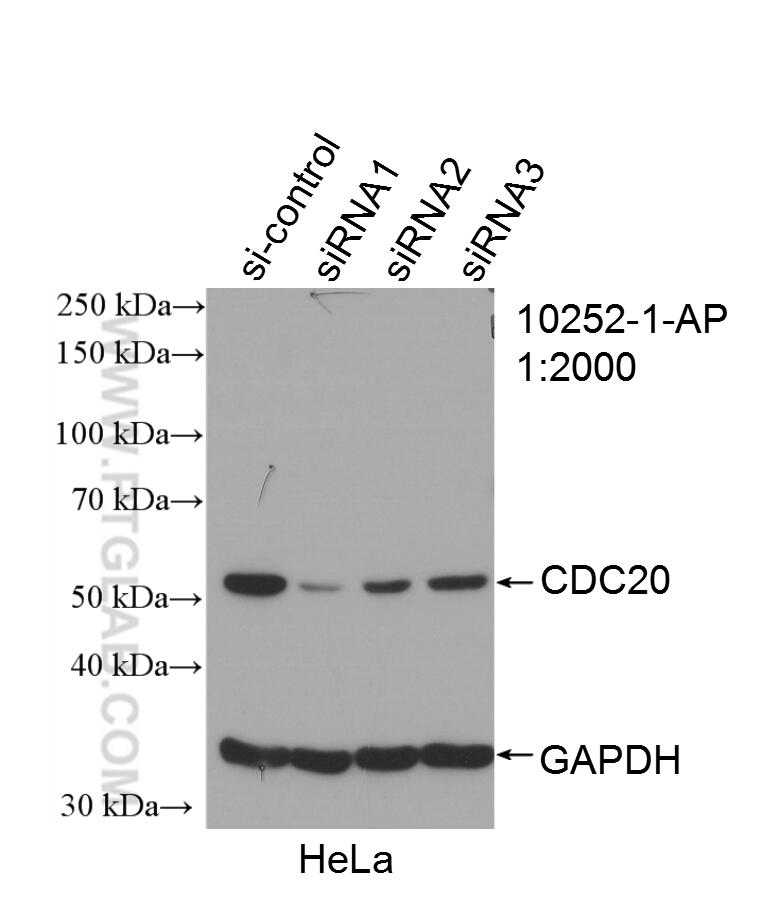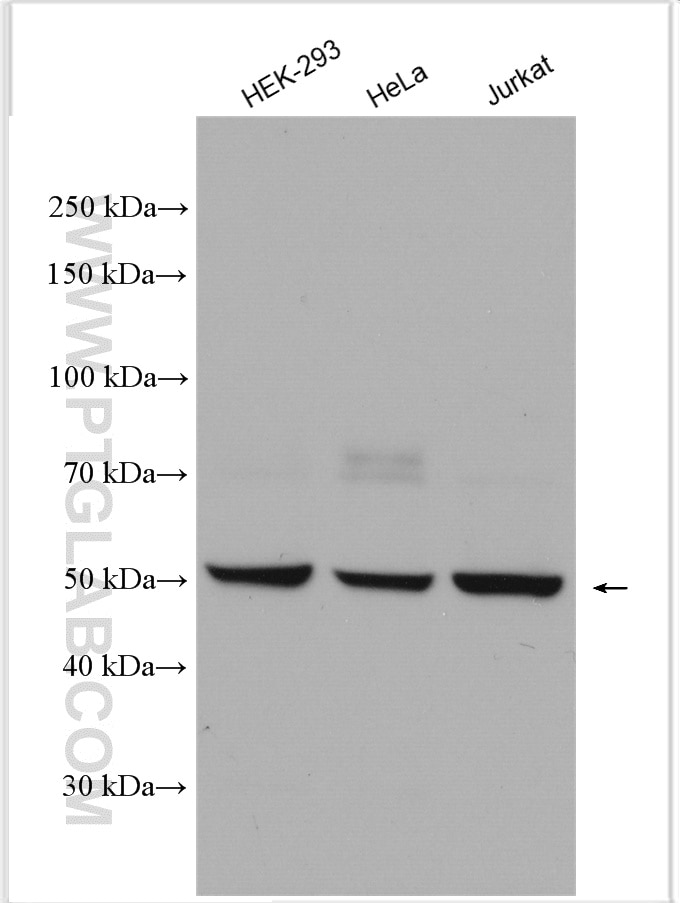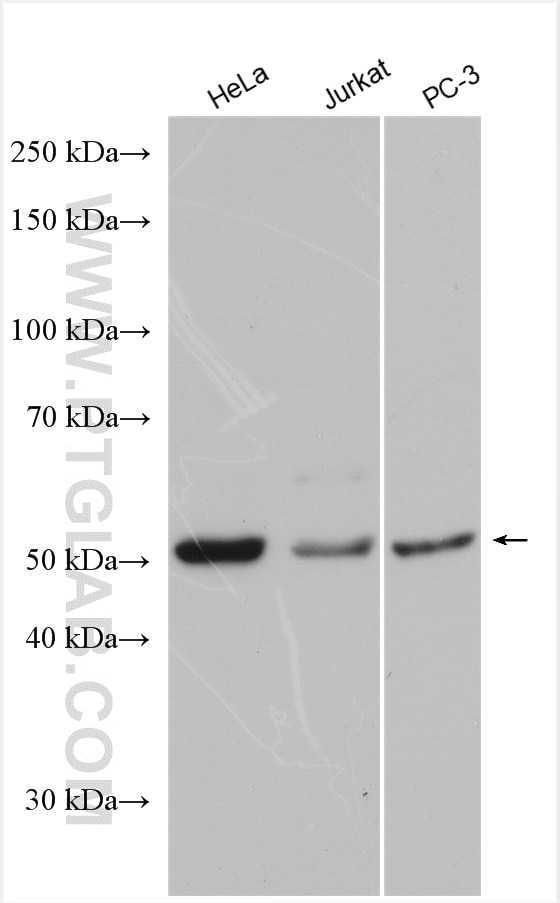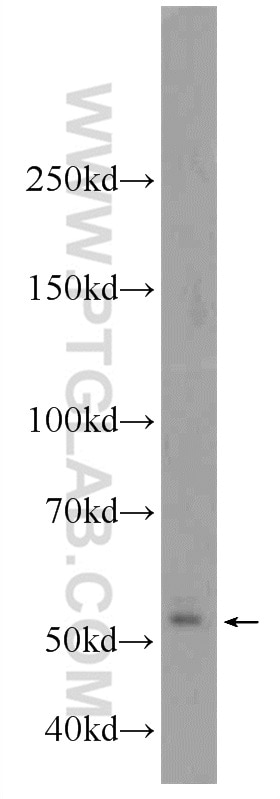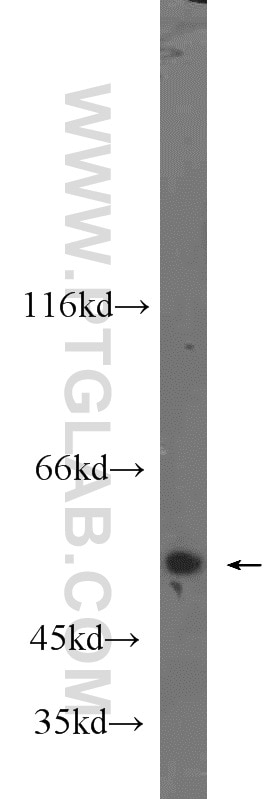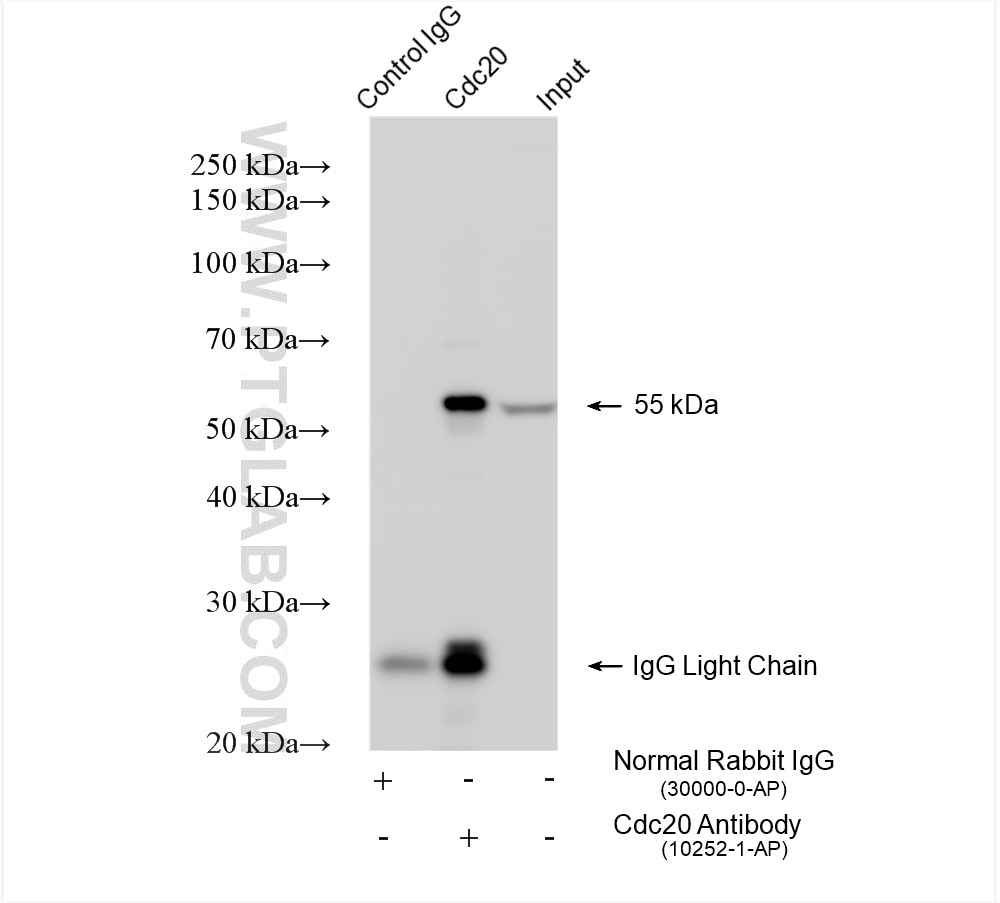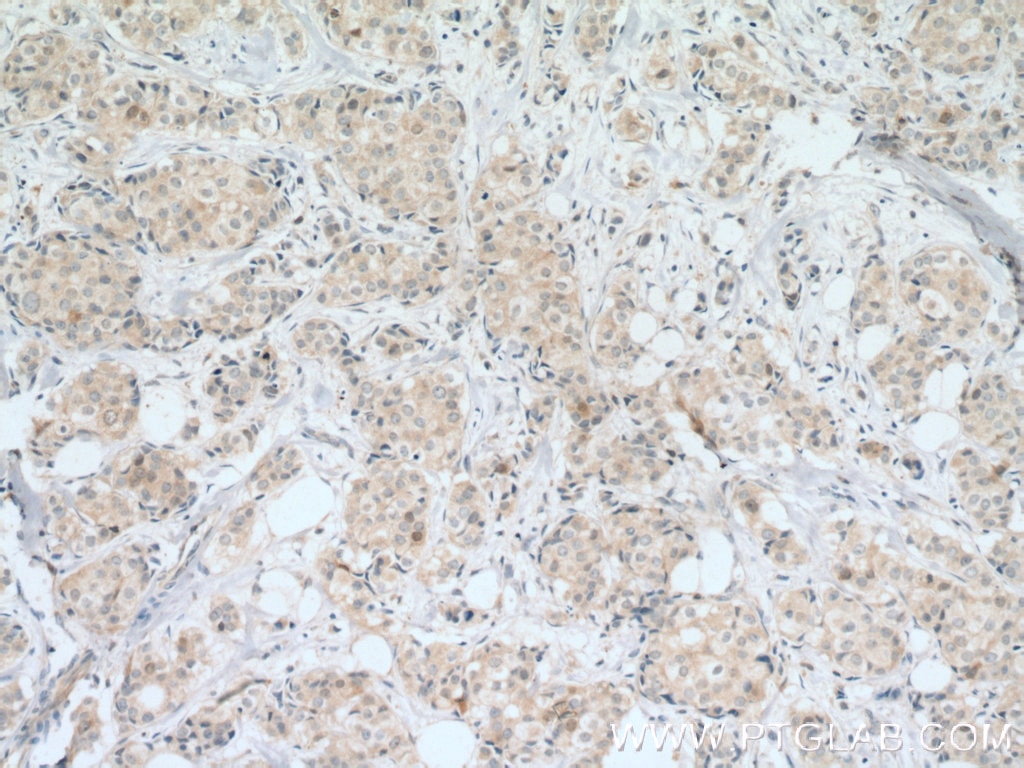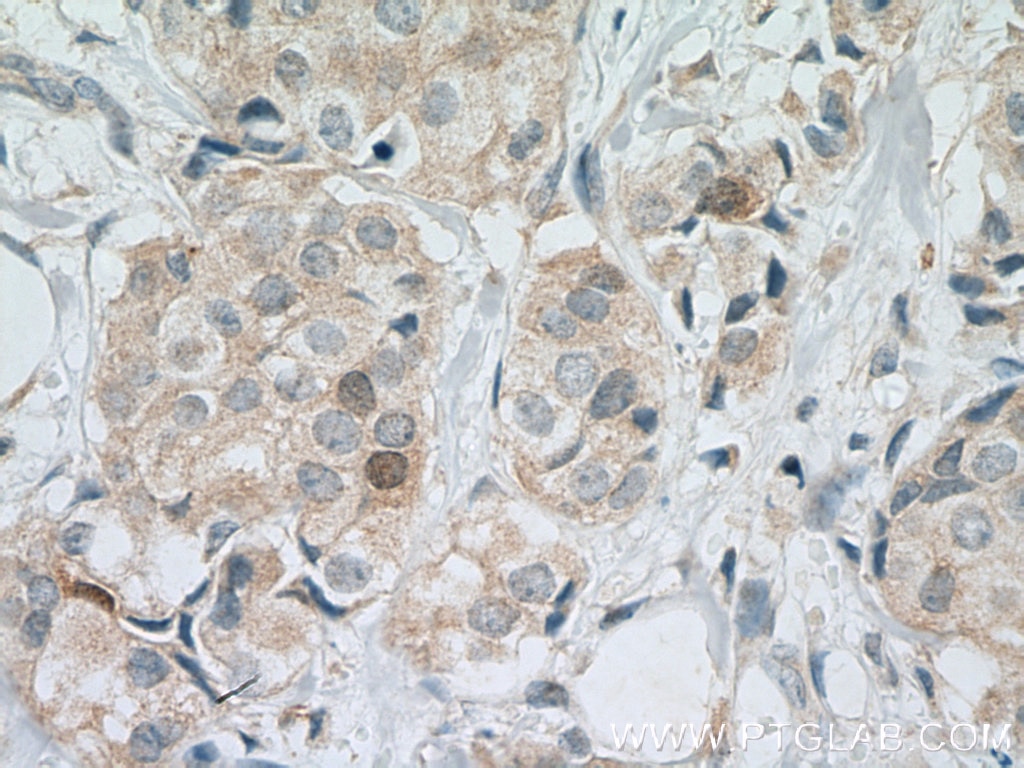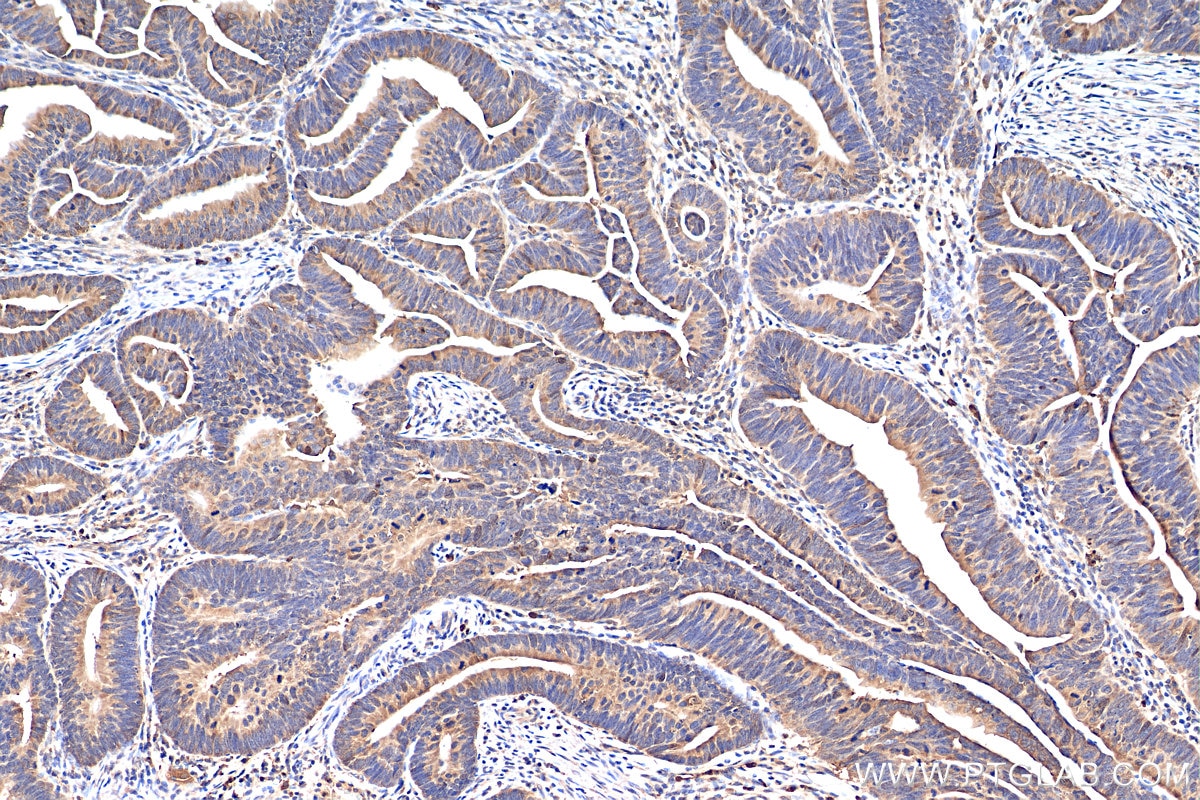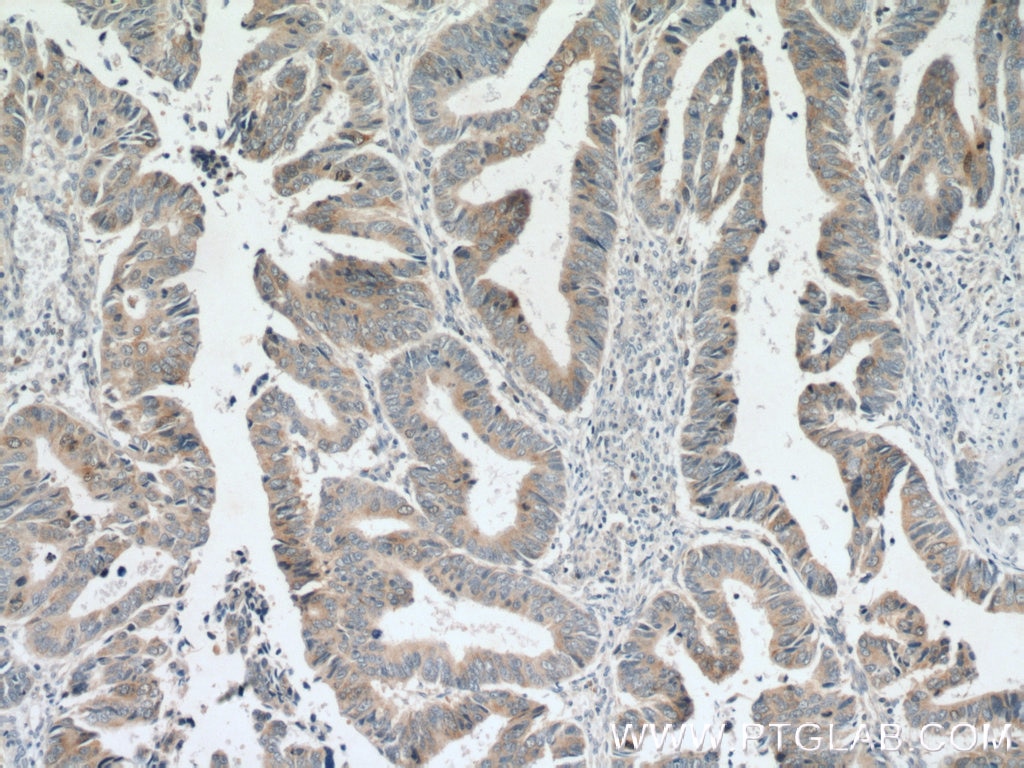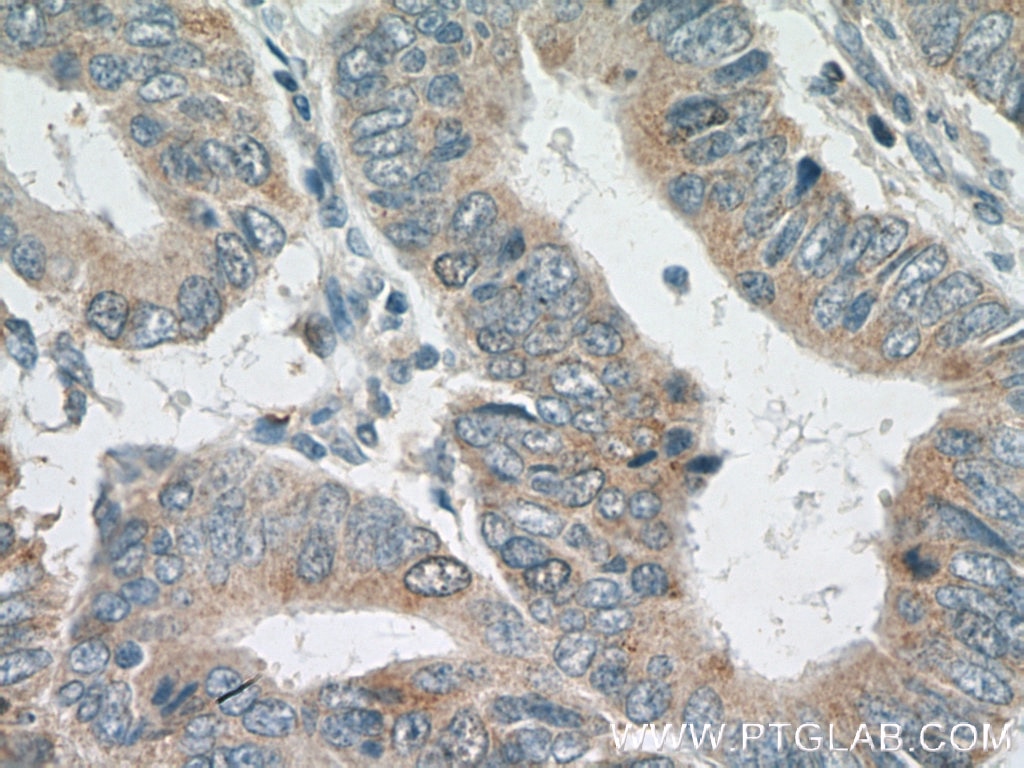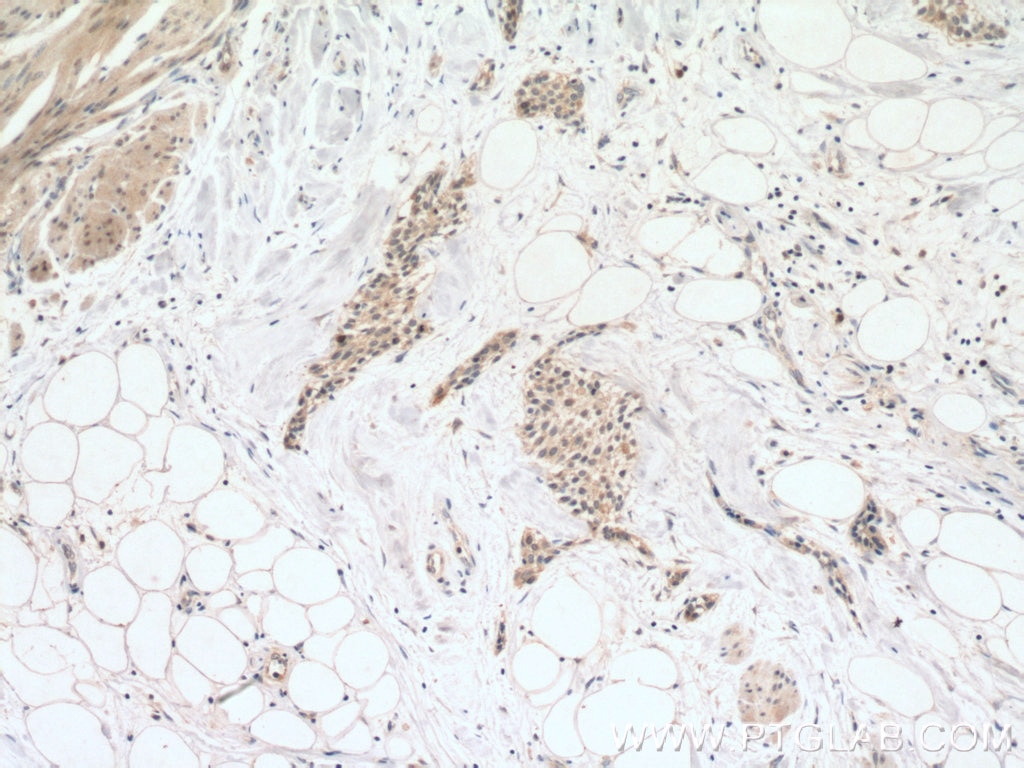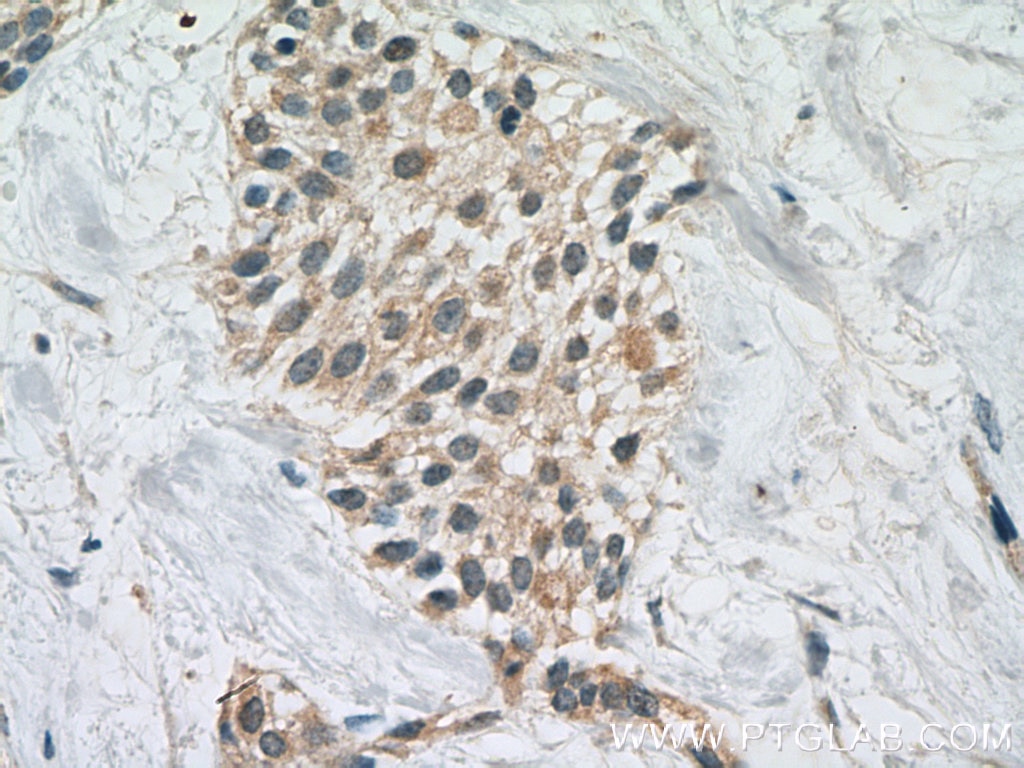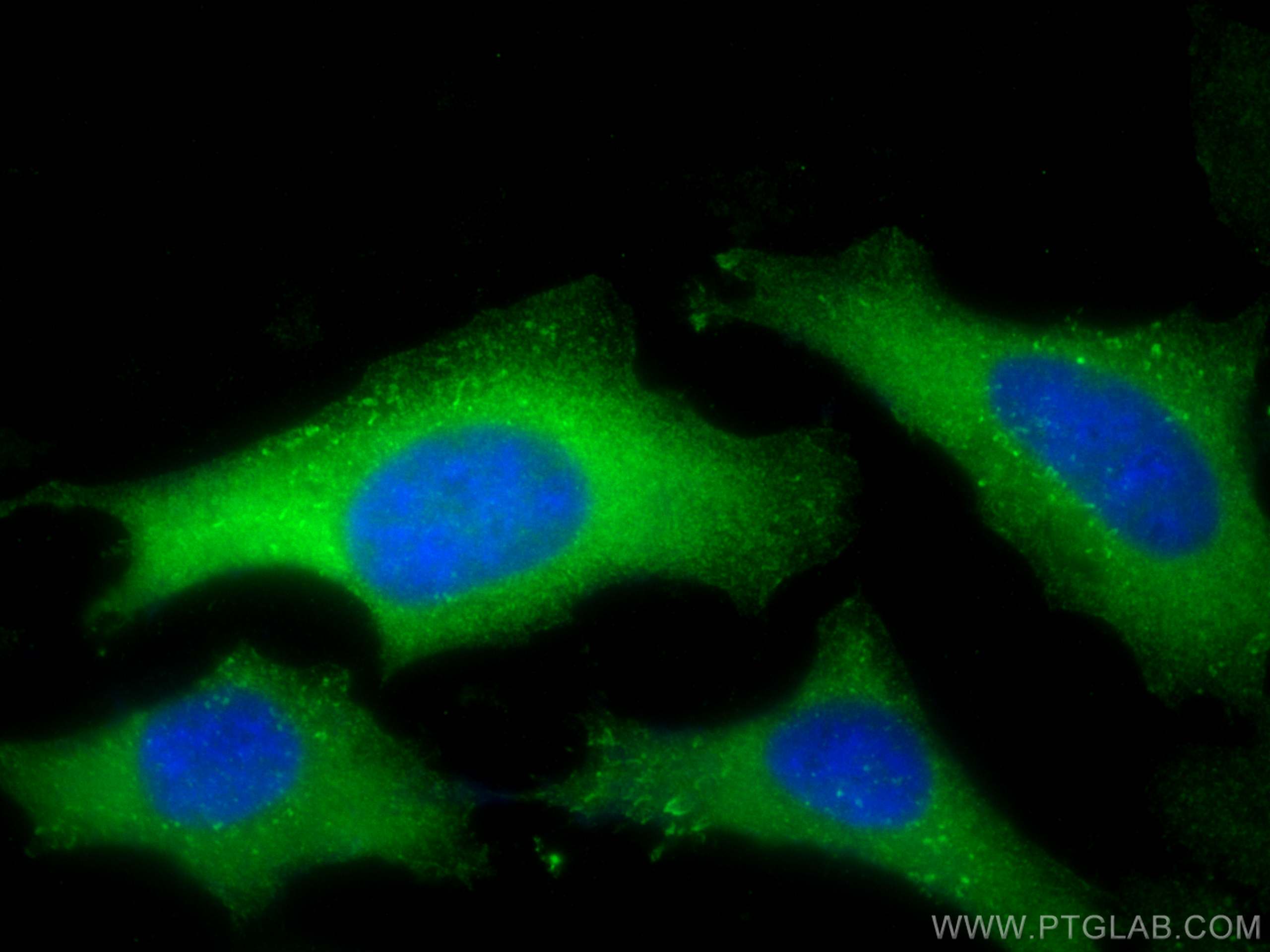- Phare
- Validé par KD/KO
Anticorps Polyclonal de lapin anti-Cdc20
Cdc20 Polyclonal Antibody for WB, IHC, IF/ICC, IP, ELISA
Hôte / Isotype
Lapin / IgG
Réactivité testée
Humain et plus (2)
Applications
WB, IHC, IF/ICC, IP, CoIP, ELISA
Conjugaison
Non conjugué
N° de cat : 10252-1-AP
Synonymes
Galerie de données de validation
Applications testées
| Résultats positifs en WB | cellules HEK-293, cellules HeLa, cellules HepG2, cellules HL-60, cellules Jurkat, cellules PC-3 |
| Résultats positifs en IP | cellules Jurkat, |
| Résultats positifs en IHC | tissu de cancer du sein humain, tissu de cancer du côlon humain, tissu de carcinome urothélial humain il est suggéré de démasquer l'antigène avec un tampon de TE buffer pH 9.0; (*) À défaut, 'le démasquage de l'antigène peut être 'effectué avec un tampon citrate pH 6,0. |
| Résultats positifs en IF/ICC | cellules HeLa, |
Dilution recommandée
| Application | Dilution |
|---|---|
| Western Blot (WB) | WB : 1:2000-1:14000 |
| Immunoprécipitation (IP) | IP : 0.5-4.0 ug for 1.0-3.0 mg of total protein lysate |
| Immunohistochimie (IHC) | IHC : 1:50-1:500 |
| Immunofluorescence (IF)/ICC | IF/ICC : 1:200-1:800 |
| It is recommended that this reagent should be titrated in each testing system to obtain optimal results. | |
| Sample-dependent, check data in validation data gallery | |
Applications publiées
| KD/KO | See 9 publications below |
| WB | See 40 publications below |
| IHC | See 16 publications below |
| IF | See 4 publications below |
| IP | See 1 publications below |
| CoIP | See 1 publications below |
Informations sur le produit
10252-1-AP cible Cdc20 dans les applications de WB, IHC, IF/ICC, IP, CoIP, ELISA et montre une réactivité avec des échantillons Humain
| Réactivité | Humain |
| Réactivité citée | canin, Humain, souris |
| Hôte / Isotype | Lapin / IgG |
| Clonalité | Polyclonal |
| Type | Anticorps |
| Immunogène | Cdc20 Protéine recombinante Ag0295 |
| Nom complet | cell division cycle 20 homolog (S. cerevisiae) |
| Masse moléculaire calculée | 55 kDa |
| Poids moléculaire observé | 55 kDa |
| Numéro d’acquisition GenBank | BC001088 |
| Symbole du gène | CDC20 |
| Identification du gène (NCBI) | 991 |
| Conjugaison | Non conjugué |
| Forme | Liquide |
| Méthode de purification | Purification par affinité contre l'antigène |
| Tampon de stockage | PBS with 0.02% sodium azide and 50% glycerol |
| Conditions de stockage | Stocker à -20°C. Stable pendant un an après l'expédition. L'aliquotage n'est pas nécessaire pour le stockage à -20oC Les 20ul contiennent 0,1% de BSA. |
Informations générales
Cdc20 (Cell-division cycle protein 20 homologue) is also named as p55CDC and belongs to the WD repeat CDC20/Fizzy family. Cdc20 has important functions in chromosome segregation and mitotic exit. Cdc20 is the target of the spindle assembly checkpoint (SAC) and a key cofactor of the anaphase-promoting complex or cyclosome (APC/CCDC20) E3 ubiquitin ligase, thus regulating APC/C ubiquitin activity on specific substrates for their subsequent degradation by the proteasome (PMID: 28202332). The 55-kDa band corresponded to the size of Cdc20 (PMID: 22566641).
Protocole
| Product Specific Protocols | |
|---|---|
| WB protocol for Cdc20 antibody 10252-1-AP | Download protocol |
| IHC protocol for Cdc20 antibody 10252-1-AP | Download protocol |
| IF protocol for Cdc20 antibody 10252-1-AP | Download protocol |
| IP protocol for Cdc20 antibody 10252-1-AP | Download protocol |
| Standard Protocols | |
|---|---|
| Click here to view our Standard Protocols |
Publications
| Species | Application | Title |
|---|---|---|
Nat Commun DNA replication initiation factor RECQ4 possesses a role in antagonizing DNA replication initiation | ||
Mol Cell Spatiotemporal Proteomic Analysis of Stress Granule Disassembly Using APEX Reveals Regulation by SUMOylation and Links to ALS Pathogenesis. | ||
Sci Signal Repurposing colforsin daropate to treat MYC-driven high-grade serous ovarian carcinomas | ||
Elife Ordered dephosphorylation initiated by the selective proteolysis of cyclin B drives mitotic exit. | ||
Int J Mol Sci Downregulation of CDC20 Increases Radiosensitivity through Mcl-1/p-Chk1-Mediated DNA Damage and Apoptosis in Tumor Cells.
| ||
Cell Death Dis Upregulation of kinesin family member 4A enhanced cell proliferation via activation of Akt signaling and predicted a poor prognosis in hepatocellular carcinoma. |
